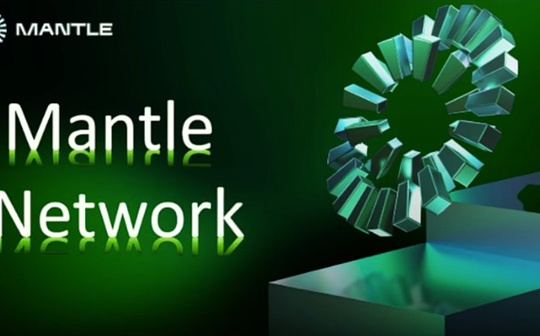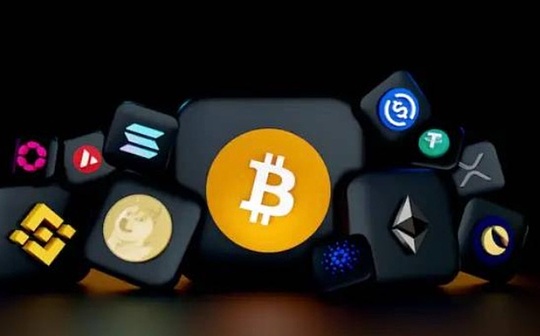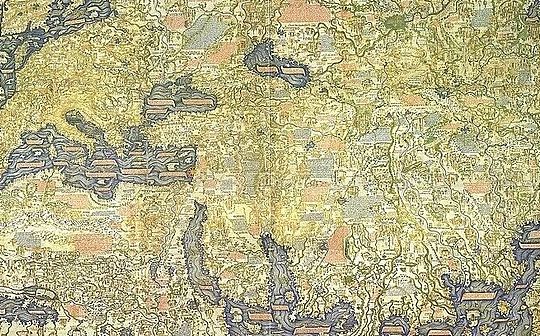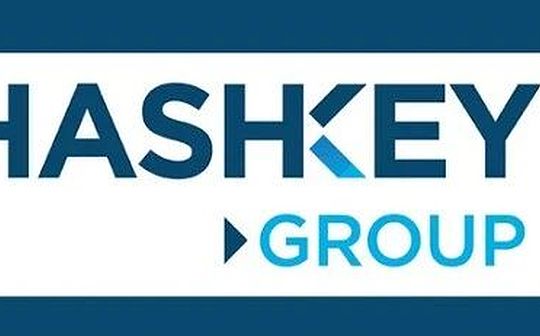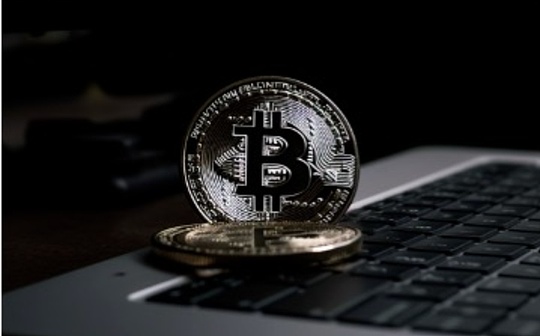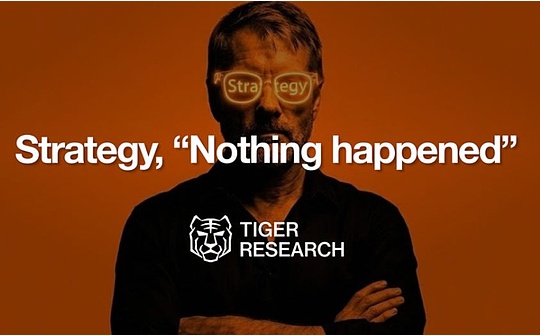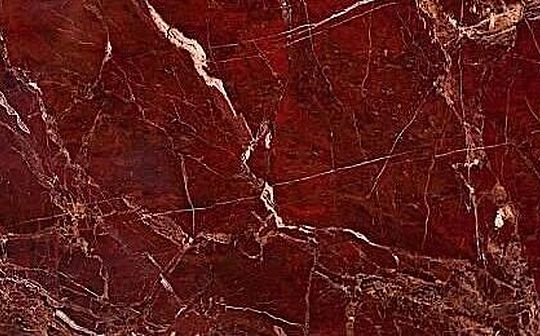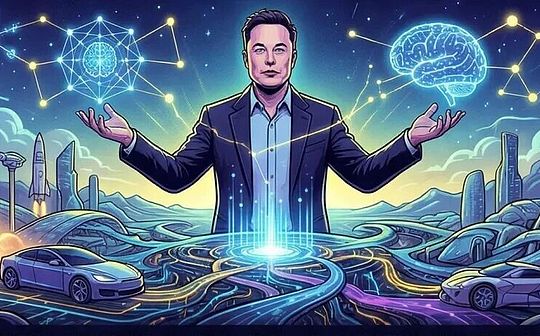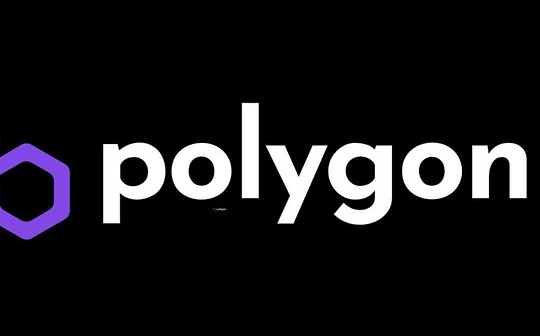
Author: Saurabh Deshpande & Amp; Siddhaarth, Decentralised.co; Translation: Bit Chain Vision Xiaozou
Back to March 2020.At that time, the market had just experienced a black swan incident, and the new crown epidemic caused a global city closure.”Unprecedented” is one of the most frequent words we hear.As global finance began to come out of the haze of the new crown epidemic, the Fed made a large -scale loser.In this environment, BTC, ETH, and a few other tokens have gone through the life cycle of their operation.But in addition to the price, a huge technical change has changed the expansion of Ethereum.
Ethereum has not solved its expansion problem in 2020.Polygon (MATIC Network at the time) was launched at this time, and it was one of the expansion methods of using Ethereum virtual machines (EVM).From 2020 to early 2021, Polygon is one of the few solutions that provide the same quality application (such as AAVE) on Ethereum, and the cost is very low.This makes Polygon stand out from other Ethereum expansion solutions.
From 2021 to 2023, Ethereum expanded competition significantly.Optimistic Rollup (or) launched feasible products before zero -knowledge Rollup (ZKR).OR’s design is simpler than ZKR.The high -performance ZKR that is completely compatible with EVM is considered to take several years to achieve it.Please listen to me; I will discuss the differences between OR, ZKR and them later in this article.Although O is usually considered to be an intermediate expansion choice of expansion, they have accumulated a large number of users and capital.In contrast, ZKR has always performed flat.This can be seen through the total lock value (TVL) of these two solutions.
OR -locking value is about $ 35 billion, while ZKR locks is only $ 3.7 billion.
>
>
With OR’s popularity and new narratives, more and more users have transferred assets to these new chains.Polygon is one of the first solutions running in the form of side chain, extending its focus to long -term ZK solution.Just like other ZK and extended solutions, the network also gave the site to O.All ZKR takes a certain time to go online.Naturally, incentives are delayed.When ZKR was launched, OR industry was mature and successfully attracted users’ attention.
In addition, once ZKR is released, they are almost no different from or in user experience.For ZKR, attracting users’ attention is a difficult battle.To this end, ZKR needs to have uniqueness to attract users.In addition, all OR (and new ZKRs) provide incentives for users and developers.
Polygon Labs has a variety of solutions, such as POS chains, multiple upcoming ZKR implementations, and development tool packages.From the outside, Polygon is confusing.For me, they seem to have tried everything.
>
However, after in -depth research, I realized how these fragments were arranged.
This article will introduce the development process of the Polygon ecosystem and its development trend in the next few months.
Speed demand
Everyone remembers the era of Crypto Kitties: a harmless experiment that brings a sense of community to the Ethereum users by supporting Ethereum users who raise and trade unique digital cats.In December 2017, the price of some cats had exceeded 100,000 US dollars, accounting for more than 10%of Ethereum GAS.This kind of fanaticism has intensified, and even the British Broadcasting Corporation (BBC) has to post it.Obviously, under the circumstances of high prices and high demand, due to high GAS fees, Ethereum becomes unavailable for ordinary users.
You can understand GAS in this way: imagine a city with limited fuel resources and free markets. When citizens know that the supply is limited and commuting is inevitable, their fuel bid will increase, thereby pushing up the price.Just like traveling fuel, all operations in Ethereum need to consume GAS.The fuel is priced in the legal currency such as Diram, the Indian rupee, and the US dollar, while the GAS is priced at GWEI (1 Nano ETH).During the network congestion, more people want to enter a limited block space, and they are willing to pay a higher price for GAS.
In 2017, it was obvious that Ethereum, a world computer, needed large -scale expansion reforms so that everyone could use it. This is a major research topic.Considering the following problems, a natural solution appeared: If a chain is dealt with 12 transactions per second, can we divide this chain into multiple independent chains?If there are 100 chains, they will generate 12 transactions per second, and a total of 1200 transactions are generated per second.As the number of chains increases, the possibility of expansion is also increasing.
This is the general concept of the base chain “Sharding”.A Shard is basically a small chain running in parallel with other small chains.However, by ensuring seamless interoperability, these independent Shards become a part of the overall Ethereum as difficult as the expansion itself.For example, when users need to execute transactions involving applications on different Shards, it is important to interact with each other.This means that the authentication set is decomposed into multiple parts to verify different chains.
Although sharding is the final solution, Ethereum will take multiple necessary intermediate measures to serve as a built block of the fragments.These intermediate measures include status channels, PLASMA, and so on.
At the same time, a different ideological genre began to form.If we do not break down the authentica set, but reduce their calculation burden?This is the proposal of rollup.Rollup uses Ethereum resources (GAS) to release trading packages instead of using it for each transaction.
Therefore, the calculation required for state renewal (the state of Ethereum is regarded as the balance, smart contract, and external account of each account) on the different layers from Ethereum, thereby saving Ethereum resources.Ethereum now only needs to handle a handful of Rollup that interacts with thousands of users, and there is no need to directly interact with these millions of consumers.Rollup helped Ethereum from B2C to B2B.
Of course, this is not easy.When Ethereum verifications no longer perform calculations, how do users know that people who perform calculations are honest?When you and I use Ethereum, we are trustworthy to trust Ethereum.Of course, we can run our own nodes to check whether the verifications are correctly executed our transactions, but we did not do so.Therefore, we eventually trust the verifications.
When you transfer an asset or exchange it with another asset, the verification person is the person who changes the state of Ethereum, such as increasing or reducing account balance.When this calculation is under the chain, the user basically trusts the operator of the layer.Now, if we say that these layers are just the expansion of Ethereum, users should not be forced to trust anyone except Ethereum verifications.This layer is responsible for some way to prove that its operations meet the rules of Ethereum.
How does different Rollup execute calculations and proves to Ethereum that they have correctly executed the calculation, which largely determines the type of rollup.OR provides their calculation results and data required by the replayed transaction (they publish the results on Ethereum).Any content submitted is considered correct, unless someone questioned it, it was called Optimistic (optimistic) rollup.
Verivers usually question the results for 7 days.Readers should notice that as of June 2024, there was no other or OPTIMISM except Optimism.Optimism has a STAGE 1 failure or fraud proof, which means that the training auxiliary wheel is still intact. If the fault certification system fails for any reason, the Security Council can intervene.
Another main category is ZKR.Zero -knowledge technology allows us to prove anything without disclosing the content details we try to prove.For example, assuming that Sid wants to prove to Joel that he knows the password of the safe they bought for them.However, he didn’t want to disclose the password because he was worried that their communication might be intercepted.What can he do to achieve the goal?
Joel can put things that Sids do not know (such as information written on paper) in the safe.After that, if the information given by SID can match what Joel placed in the safe, then Joel can confirm that the Sid knows the password, without the need to disclose the password itself.From the perspective of great intentions, this is the working principle of zero -knowledge proof.They do not publish all data to the verifications in order to redefine all transactions, but submit a certificate to Ethereum.
Ethereum, L2 or extended anchor point
As we know today, Ethereum developed with agreements and applications.Some projects adapt to development with the development of Ethereum, while others are left behind.The story of MATIC Network (now Polygon) is a good example.With the sunlight of Ethereum, Polygon planets flourish.
Since the launch of Ethereum in early 2015, crypto assets and blockchain patterns have changed a lot.The expansion plan of Ethereum had a major transformation at the end of 2020. At that time, Vitalik wrote an Ethereum article centered on Rollup, which specifically mentioned that the development trajectory of Ethereum could be divided into two eras: before Rollup and Rollup.If Ethereum is your anchor, you must follow it.Polygon ensures that it is adjusted to adapt with the changes in the Ethereum route.
Obviously, Ethereum requires large -scale expansion to become a world computer.Before understanding how the expansion of Ethereum evolves, we should review the basic meaning of expansion.Expansion is a security guarantee for expansion of Ethereum.No matter what method we use, we should rely on the security of Ethereum to some extent.In other words, Ethereum L1 should be able to have a final decision to the state of the expansion layer.
Several methods are proposed, such as status channels, PLASMA, side chain and shards.Before Ethereum decides to support Rollup, they are in different development stages.
Plasma and side chains are similar to a certain extent.Plasma is a separate chain. The transaction is executed on this chain, and the compression data is regularly published on Ethereum.The Plasma chain challenges the availability of data.
Data usability (DA) solution usually separate consensus data from transaction data.With the growth of the blockchain, the state of storage and processing has become a challenge.Data availability solutions solve the problem of capacity expansion by separating consensus layers and data layers.The consensus layer processing the sorting and integrity of the transaction, while the data layer stores transaction data and status updates.
All historical data of the Plasma chain can only be obtained by Plasma operators, and cannot be obtained by the entire node of Ethereum.The whole node only knows compression data.Therefore, users must trust operators to maintain data availability.The security of the Plasma chain depends on the security of the root chain (Ethereum).Follow the rules of the root chain to solve the proof and challenge of fraud.
The side chain is an independent chain, with its own consensus and authentication set.They release data regularly on Ethereum.The key difference between the two is that there is a separate authentication set based on different consensus.Users must trust the side chain verifications to maintain the integrity of their transactions.
OR in the following aspects is better than Plasma and side chains:
1. Unlike Plasma, they can avoid data availability issues by publishing all data on Ethereum.
2. Unlike Plasma and side chains, users do not have to expand to greater trust assumptions; that is, they do not have to trust a set of new operators or verifications.
This is why rollup is considered a superior form of expansion.Some people may say that they are an improved version of Plasma.
>
The state channel is a solution similar to the Bitcoin Lightning Network.Here is a metaphor for the state channel.Assuming that Sid and Joel are friends, the two run the sandwich shop and coffee shop respectively. Two shops are next to each other.They like the concept of cross -sales and decide to integrate their menus, because their customers often want things in both stores.Therefore, when the customer ordered a sandwich in Joel’s shop, Joel handed the order to SID, and SID was on the sandwich.
However, customers only need to pay at their meals, even if their orders may come from other restaurants.Both Sid and Joel recorded the customers of another store ordered how much their stores.They did not check out immediately after receiving the money of the customer, but at the end of the day of business.
Both Sid and Joel retain the sandwich and coffee bills they supply in another store, which is equivalent to retaining a state document.Throughout the day, if Joel provides SID customers with coffee worth $ 200 and SID provides Joel’s customers with $ 250 sandwiches, then at the end of the day, Joel pays SID $ 50 and the bill will be settled.This is much more efficient than each cross -sales settlement income.SID and Joel open each other’s documents like two nodes or accounts.
From the perspective of high -level perspectives, two users or applications can open a lower channel, execute transactions, and settle the chain when closing the channel.This method needs to open multiple channels between users (opening and closing the channel is trading on the chain), and it is difficult to expand.As of June 2024, the capacity of the lightning network was only about 5K BTC.Roughly speaking, this means that it cannot handle sale and selling transactions with more than 5K BTC at the same time.
Polygon is one of the early expansion solutions for the release of the main network.Polygon’s development has experienced four periods, both in technology and ecosystems:
1. MATIC Network
2. Polygon expansion
3. Hug ZK
4, aggregate all
>
MATIC network
The MATIC network is a combination of Plasma and side chain methods.Verifications use MATIC tokens as mortgages to verify the security of transactions and protect the chain.As an additional security measure, the Checkpoint checkpoint (chain status snapshot) was submitted to Ethereum.Therefore, once the checkpoint on the Ethereum is finally determined, the state will be frozen on the MATIC network.After that, the block cannot be contended or reorganized.
In 2021, the MATIC network was renamed Polygon, but this was not just a change of name.The MATIC network is a single -chain effort to expand Ethereum, while Polygon has shifted to the multi -chain ecosystem.In order to solve the problem of expansion from multiple angles, Polygon launched a software development toolkit (SDK), allowing developers to easily transplant their applications to Polygon.
In April 2021, after a few months after AAVE deployed on Polygon, TVL jumped from about 150 million US dollars to nearly $ 10 billion.At that time, Polygon surpassed most of the blockchain on active users and transaction volumes.Even in June 2024, Polygon POS still dominates the number of daily living users.Readers should reserve attitude because we cannot know the real number of active users.Data suppliers usually track the event address.One address does not necessarily mean a user, because a user may have multiple addresses (almost always) multiple addresses.
>
What did SDK do?SDK provides build blocks for larger software blocks (in this example).Polygon SDK provides tools for developing two types of chains:
1. The independent chain with a collection of their own verification
2. The chain that depends on Ethereum (L2)
The side chain and corporate chain need to control the operation method more (who can participate, who can run nodes, etc.), they will choose the first option.In contrast, emerging projects that lack resources or are satisfied with the security and consensus rules of Ethereum will choose the latter.
Hug ZK
With the increase of Polygon’s POS chain and more attractive users, Polygon Labs explores more methods to expand Ethereum.In 2021, when ZKR was basically in the development stage, Polygon Labs allocated $ 1 billion in funds for ZK development.They acquired Hermez Network, Miden and Mir Protocol.Although all these teams run under the big umbrella of ZK, they have special uses.
Hermez focuses on building a real -time ZKEVM. MIR focuses on building a leading verification technology in the industry. Many other ZK teams are used to create a client -verified ZKVM Rollup -ZK in pockets.
>
When Polygon Labs fully invests in ZK development, many people think that ZK technology will take 3 to 5 years to mature.On the other hand, although there are no fraud proof, OR production is just around the corner.This leads to a question, why do Polygon Labs pursue something that takes longer, rather than deploy OR solutions first, and then perform ZK development at the same time?
The answer can be divided into two parts:
1. In terms of scalability and security, OR will be a gradual solution better than the Polygon POS.
2. ZKR is considered the ultimate solution to win or OR.
Yes, as long as OR has fraud proves, their security assurance is better than the side chain (such as Polygon POS), but for end users, the cost has not changed much.It is important to note that, in addition to Optimism, fraud proves that it is ineffective for any or OR.In March 2024, Optimism began to test fraud.Therefore, there is still time before all OR had fraud proof before their respective online.Polygon POS’s daily transaction processing volume has reached millions of pens.
Therefore, if you think about the barbell strategy, that is, the risk is usually allocated through the high -risk and low -risk tools in the investment portfolio, and you will understand that this is what Polygon technology looks like.
>
Recall the difference between or ZKR, and the former must submit all transaction data on Ethereum.With the increase of the transaction volume on the OR, the amount of data that they must release on Ethereum is almost linearly increased.However, the size of the ZK proved is accurate.Therefore, as the transaction volume increases, ZKR’s efficiency is significantly higher than O.
>
This makes ZKR more advantageous than OR.However, the number of people who fully understand ZK technology and can create an infrastructure layer that can deal with hundreds of billions of dollars may be three digits.ZK technology needs time to develop.The acquisition of the ZK development team allows Polygon Labs to gain the tactical advantage that few people can enjoy in the industry.
(1) rollup and train
The most important Polygon technology is ZKEVM.Why?Let’s make an analogy, the old blockchain is like an old engine and train.They are slow and small, so they are expensive.But because they have already existed for a while, they have established rail networks in many regions.Imagine EVM as a rail network; it meets the most widely used standards, so there is tools to promote its use.It is impossible to continue using these trains because they are too slow and too expensive.
OR is similar to the improved version of this train, using the same track as early trains, but the speed has been increased by 10 to 100 times.However, this is not enough.We also need several magnitude and capacity improvements to ensure fast and low -cost travel.The goal of ZK is to achieve this.But the problem is that the train no longer uses the old rail network; they need some changes.ZKEVM allows ZK Rollup to use it with the existing EVM tools.
>
From a security perspective, O cannot prevent accidents.The premise of their operation is assuming that no accidents occur.The fraud proves that it is like Nolan’s movie.They cannot prevent accidents, but the system can return to the past in time to solve the problem before the accident.On the other hand, ZK technology can prevent accidents.
(2) EVM equivalent problem
Let us understand the entire ZKEVM business more deeply.The metaphor of the train track explains why we need to be compatible with EVM.However, this compatibility is not 0 and 1, but can be regarded as a spectrum.The proofer is a key component of the ZK machine.It proves that an event occurs without revealing the content of the incident.For example, if the agreement wants to confirm whether the user has certain wealth, you can treat ZK Prover as the first choice for this operation without leaking user wealth.
Why talk about ZK?Snark or Stark technology allows chain to create encryption certificates.Both technologies are a method of proven provenance.These proofs can be used to prove that the transaction occurs on a chain.If we want to expand Ethereum, we can use this technology to prove that a transaction similar to Ethereum occurs on some layers.These layers are rollup. ZK technology allows Rollup to compress the transaction data according to the order of magnitude, thereby expanding Ethereum.If the goal is to expand Ethereum, then the goal of ZKEVM is to prove the execution that can be verified by the Ethereum execution layer.
When Rollup is completely equal to Ethereum, it can reuse things such as Ethereum’s existing client.It means that Ethereum equivalent means that Rollup and Ethereum smart contracts and the entire Ethereum ecosystem remain completely compatible.For example, the address is the same, wallets like Metamask can be used on rollup, and so on.
Ethereum understands that it is challenging.When designing Ethereum, ZK’s friendship is not one of the factors to be considered.This is why some parts of Ethereum are calculated for ZK proof.This means that the time and costs required to generate these proof have increased.Therefore, if a proof system must use Ethereum, then this proof system must be huge.On the other hand, a proof system can be relatively lightweight, but it must build its own component to adapt to Ethereum.
Therefore, different ZKEVMs weigh the balance between the ease of use of the existing tools and the cost and difficulty of proof.Vitalik discussed the existing ZKEVM in a blog post according to these ideas.I will provide you with more details (we will discuss this issue in future articles), but Zkevm (or Prover) has various types.Type 1 is the most compatible but the lowest performance, and the Type 4 is the most compatible but the highest performance.
Type 1: These ZKEVM are completely equivalent to Ethereum.
Type 2: They are EVM equivalent, but not Ethereum equivalent.This means that it is necessary to make small adjustments to Ethereum so that it is easier to prove the generation.
Type 2.5: In addition to GAS costs, it is similar to Type 2.When it involves ZK proof, not the difficulty of every operation is the same.This type of ZKEVM increases the GAS cost of certain operations, which indicates that developers should avoid these operations.
Type 3: This type of ZKEVM changes Ethereum to improve the PROVER time, sacrificing accurate equivalent in this process.
Type 4: This method compiles the source code written by Solidity or Vyper (Ethereum) into another language.This type of Prover completely reduces the overhead of Ethereum and makes ProVer the lightest in all types.The disadvantage is that it looks completely different from Ethereum.Starting from the address, everything is different.Do you notice that StarkNet needs different wallets (such as Argent).Even the address looks different from the Ethereum address.
>
Polygon Labs recently released an upgraded version that introduced a new era of verification technology using Type 1 Prover.Using Type 1 means that any EVM chain, whether it is the new chain created by the Polygon CDK or an independent L1 chain, can become an equivalent of the Ethereum ZK L2.
Aggregate
No EVM chain is ready to bear the load of the entire Internet.It’s still far away.This is why we turn to L2.There are now several L2 in the market, but the number of users and capital has not increased at the same speed.Lobricity, user, locking value -almost everything that makes a chain valuable -scattered on multiple L2.To some extent, L1 and L2 constitute a paradox: the basic layer cannot be expanded, and multiple chains may dilute the value.
>
One way to solve this paradox is to provide a service that supports assets and information seamlessly between multiple L1 and L2, but the most important thing is that there is no rent for rent, no mining costs, and ensuringThese chains retain their sovereignty.
Agglayer’s design is to do this.
Agglayer is a solution that supports safe and fast cross -chain interoperability.Interconnected chain sharing liquidity and state.Prior to Agglayer, sending assets between the chains must either trust the packaging assets of the assumptions and the third -party bridge service, or it is from L2 to Ethereum and then bridge to receive the target chain, which will bring densely costly poor user experience.
Agglayer eliminates this friction in cross -chain transactions and creates a interoperable chain network.How to do it?We will introduce how Agglayer operates in the future articles, and only generally introduces it here.At present, L2 is a different contracts on Ethereum.Transfer funds from one L2 to another L2 involving three independent security areas -two L2 contracts and Ethereum.
In the case of cross -chain transfer, the security zone is part of the infrastructure of the verification dealer.Effective inspections and transactions occur on these nodes.The result brought by different security areas is that when you sign a transaction to transfer the assets from one L2 to another L2, Ethereum will participate.In the background, the assets are sent from source L2 to Ethereum, claimed on Ethereum, and stored in target L2.These are three different instructions, transactions or intentions.
Using Agglayer, you only need to click on one click to complete the entire transfer process.Agglayer has a unified bridge contract on Ethereum, and any chain can be connected to it.Therefore, Ethereum sees a contract, but Agglayer sees many different chains.A ZK prove that “PESSIMISTIC ProOF (Pessimi Certificate)” proves that through a suspicion of treating each related chain, the total funds are locked on the unified bridge to ensure the security of funds.In other words, pessimistic proof is a safe encryption guarantee, which means that a chain cannot deceive the entire bridge.
With Agglayer, it does not need to involve Ethereum when the asset is transferred from one L2 to another, because all L2 shared status and liquidity.The above three transactions or intentions can be merged into one.
The final of Agglayer is:
SID wants to buy some NFT on Chain A, but all his assets are on Chain B.He connected his Polygon wallet, pressed the purchase button, and put NFT into his wallet.Before purchasing, the bridge from chain B to Chain A was completely abandoned.
>
The advantages of Agglayer are as follows:
1. It transforms the zero -harmony of liquidity and user fragmentation into a more cooperative way between each chain.
2. Each chain benefits from security and tools, while maintaining their own sovereignty, without having to release Bonds on early models like Polkadot.
3. It allows the chain to interact with each other below Ethereum.
4. It brings alternativeness to the bridge asset and improves the user experience.Everything happens in a bridge, so different versions of packaging assets are not needed.
5. Bring a better user experience for users, because the bridge is abstracted.
At present, Rollup and Validum have published their chain -like state to Ethereum, respectively.Agglayer’s polymerization chain status and submit all content to Ethereum with a single certificate, which helps save GAS costs for agreements.
>
Even based on game theory research, it has been showed that cooperation has always been the best way to survive and develop.Agglayer is a positive harmony, because it:
1. Reliable neutrality (not biased towards any specific items; any chain can be connected)
2. Unified liquidity and status, allowing the new chain to guide users and any related chain liquidity.
While other multi -chain ecosystems collect chain chain fees (so these costs will eventually be distributed on the downstream chain users), the design of the Agglayer is as minimized as possible, while providing a safe and low -delayed cross -chain interoperability.
Recently, a trend of the application chain of the APP has appeared, and the application chain has become more and more common.AEVO, DYDX and OSMOSIS are the main examples of this trend.Jon Charbonneau pointed out:
● Applications require flexibility and sovereignty, so they launched their own application chain.
● The application chain shows the growth of users and activities, and hopes to obtain more value by allowing others to “based on it”.
● Then, the application chain becomes a general chain.
>
As Lanre said, the market seems to hope that the application will become the application chain and then become a general chain.If I extend this trend to the extreme, we will leave only a few general chains.Although there are multiple chains, the liquidity is unchanged with the user, and shared between these chains.The more the number of chains, the worse the overall encryption user experience.
As we said before, this is because liquidity and users share between multiple L2, which leads to poor liquidity in many L2.There must be a solution to combine all these, and Agglayer is a step in the correct direction.There are many reasons for applications to have a dedicated block space.
For example, when there is a popular NFT cast on the same chain, a transaction app should not be forced to compete for precious block space.Running or liquidation should not be affected by other activities on the chain (in terms of fees or throughput).But if many applications are developing in the direction of the application chain, they will face fragmentation risks.
Therefore, Agglayer integrates these different chains.This is a simple solution that allows the game chain and DEFI chain to avoid direct competition block space, but it can still achieve cross -chain interoperability.
On the one hand, Agglayer can help unify cross -chain liquidity, and on the other hand, Polygon CDK can be used to start chains.
Polygon CDK is a collection of open source technologies that has been continuously developed over the years.It was originally a SDK and transitioned to the super network before presenting the current form.Polygon CDK allows developers to build two types of L2: Rollup and Validium.
The most important attribute of Polygon CDK is its flexibility.Developers who build a new chain (L2) can customize different options through four parameters (VM, Mode, DA, and GAS tokens).
● VM (virtual machine) is an environment for execution of transactions.Polygon CDK will allow developers to choose from different VMs, such as ZKEVM.
● Mode (mode) refers to selection between Validium or Rollup.The difference between the two is what kind of data they posted on Ethereum.Rollup publishes the transaction data on Ethereum, providing more security for the Rollup mode.Validium publishes these data on a separate layer, such as their own DA layers.
● DA (data usability) is a key aspect of expansion, which is separated from the data layer and the data layer.Ethereum and Bitcoin chains are stored in the entire node of the chain, so that they can independently verify all transactions.Polygon CDK allows the blockchain to establish its own custom DA committee or use DA solutions like Celestia.
● GAS token customization refers to the ability of the blockchain to charge GAS fees (the selected token price).For example, Polygon CDK allows developers to allow users to use their native currencies (rather than ETH) on their chain to pay GAS.
● Sortter, or operators who determine the order of transactions and execute transactions are currently concentrated.In the future, other teams or individuals may be able to run sorters.
In addition to this modularity and sovereignty, there are other advantages to build CDK for construction.Polygon CDK provides a optional feature for the chain to allow them to use Agglayer’s unified single bridge contract.In this way, there is no need to have different versions of packaging assets.This improves the user experience of the CDK application chain.
Please note that the AggLayer’s unified bridge contract lent this ability to assets.The chain built with CDK must be “selected” to use this function.They can choose to have their own bridges and maintain different assets.Other solutions, such as Arbitrum, have other variants of USDC, USDC.E, and USDC.Usually, users must exchange between these variants when receiving the main network on the bridge.
For example, using Polygon CDK, you can choose the Rollup mode for the application chain of borrowing and derivatives (all data are published on Ethereum), use Polygon ZKEVM as a virtual machine (VM), and collect GAS fees with their native trains instead of their native token instead ofETH.However, a specific NFT application chain may adopt Validium mode. It can choose to publish data on Celestia or separate data availability committees (DAC) and use ETH as its GAS tokens.
The sorter is currently concentrated (because it spans all main ZK Rollup).In the end, if the CDK chain is willing, they will be able to use shared sorters.It should be noted that aggregation and modularity or sovereignty are not contradictory.
>
As of March 2024, 9 teams have used the Polygon CDK to build a chain, and another 20 teams are in different development stages.The CDK framework is completely open source, and anyone can use it to build a chain.
It is essential to upgrade MATIC tokens to POL.Currently, MATIC protects the security of the Polygon POS chain.The proposed STAKING HUB (pledge center) architecture has not yet been provided, but the proposal states that POL will play an indispensable role.
Ecosystem
>
Please note that this is just the representative of the Polygon ecosystem.It is not detailed.
Developers are the lifeblood of any ecosystem.Developers are usually pioneers of user activities on the chain.Although the market is in a downturn for most of the time in 2022 and 2023, as far as the number of new developers added, the Polygon ecosystem is second only to Ethereum.
>
Source -Electric Capital
If the developer is the advanced indicator of the future, then the user is the feedback circuit of the blockchain.Polygon’s user activity is still high.The only EVM chain with higher user activity than Polygon is the BNB chain.Please note that Polygon here only refers to Polygon Pos.As more and more blockchains are connected to Agglayer and/or using CDK, this number may rise sharply in the future.In the end, developers hope to customize the network to meet their needs.And this is exactly the purpose of Polygon using CDK for optimization.
Bleak
>
Data as of April 2024
Compared with other L2 or Solana chains, Polygon’s DEX activity is still low.
Interestingly, QuicksWap is the leading DEX, with a transaction volume of about 60%.Generally, Uniswap occupies a dominant position on the EVM chain.
Bleak
>
Source -DEFILLAMA (Data as of April 2024)
The figure below compares the DEX transaction volume on different EVM chains.Arbitrum is the leader, followed by Polygon.Because incentives have promoted everything in the cryptocurrency field, it is worth mentioning that although Arbitrum provides transaction incentives for DEX protocols and users, Polygon stopped providing incentive measures in 2022.The transaction volume has basically maintained organic growth.
Bleak
>
Data as of April 2024
The total lock value (tvl) is not a good indicator for measuring whether a chain is successful, because it cannot tell you the quality of funds.In other words, most of the funds in cryptocurrencies can be regarded as mercenaries.The flow of capital is motivated.The agreement either provides incentives or users perform SYBIL operations for airdrops.Nevertheless, long -term high or medium TVL means that users prefer the chain or protocol in some form.The figure below shows the weekly TVL of different L2.
Bleak
>
Data as of April 2024
Most of the TVLs in Polygon borrowing applications come from AAVE.AAVE accounts for 87%of Polygon’s total lending TVL.
Bleak
>
Data as of April 2024
As far as the volume of NFT transactions is concerned, the leading chain is Bitcoin and Ethereum, mainly because NFT is priced at its native assets (BTC and ETH), and the liquidity of these assets is almost the highest in the industry.When we look at the number of transactions, Polygon leads its EVM.
Bleak
>
Data as of April 2024
The game is the main contributor of Polygon POS growth.Since the beginning of 2024, the only address of the game interaction with the game on Polygon has increased by five times, from 80,000 to nearly 400,000, while MATR1X and Sunflower Land have attracted more than one million users in their life cycle.
The main driving force of this growth is the cooperation between Polygon Labs and Immutable.Immutable provides a set of products for game developers, from the NFT casting mechanism to wallet to SDK, which is everything that game developers need.It also provides all support with the blockchain so that game developers can focus on the game, instead of worrying about the blockchain aspect of the Web3 game.
The ecosystem has more than 40 playable games, and several are under development.Immutable’s ZKEVM built by Polygon CDK has been launched on the main network for early visits.At this stage, customized smart contract deployment is limited to a group of selected game studios.
Beyond DEFI, Games and NFT
We often talk about cryptocurrencies that will not have a substantial impact on “normal” life.Decentralized physical infrastructure (DEPIN) is an area that is gradually changing this cognition.Blockchain is good at coordinating incentives and ensuring that these incentive measures are delivered to the pre -determined agreement.
The DEPIN project is in a key cross point in the physical and digital field.Usually, users help the network development through some form of resources, while the network inspires users through inflation tokens and user income.The sustainability of the DEPIN project depends on whether they can attract payment households.
In DEPIN -related transactions, Polygon has obviously lagging behind DEPIN leader Solana.As a background, in February, Solana supported more than 4 million DEPIN -related transactions; in contrast, Polygon only supported about 39,000 strokes.
DIMO, also known as Digital Infrastic for Moving Objects, is leading Polygon in DEPIN’s use of indicators.
Bleak
>
Data as of April 2024
It enables mobile objects to share data in a way of privacy protection.The first case is car. The driver uses DIMO devices and shares data with stakeholders such as manufacturers and policy issuers.At present, nearly 70,000 drivers use DIIMO to share data with applications such as markets, insurance and point -to -point carpooling.In return, they will get DIMO tokens.
Although DIMO’s application starts in cars, it can be extended to any mobile objects, including drones, and may be applied in the fields of supply chain management, intelligent mobile and autonomous vehicles.
Other DEPIN projects on polygon include:
● Fleek Network is a decentralized custody platform that provides services to websites and network applications through the global distribution node network, providing fast, secure and redundant access.
● Geodnet aims to improve GPS accuracy by constructing decentralized real -time sports networks and token incentives.
● Space and time, aiming to create a global transparent data warehouse that does not belong to a single entity.
● XNET, dedicated to improving mobile connections.
At present, networks like Solana are in a leading position in DEPIN.Some reasons for motivating developers to develop on Polygon in the near future are their EVM compatibility.Users can get rewards in the form of tokens and immediately access the number of applications built on Ethereum network (and all their chains), which may be a powerful attractiveness.Having said that, for Polygon, how this field will develop in this field to be observed.It’s too early.
challenge
Of course, all these changes are accompanied by quite a lot of trouble.Just like any ecosystem that continues to grow and grow, Polygon is also facing some challenges.The specifics are as follows.
Prove that the submission frequency is low
The final certainty on Polygon Zkevm can be roughly divided into three stages-
1. The transaction has the final determination of the credible state on L2
2. Ethereum receives the virtual state of transaction data from L2
3. The unified state of the proof of the verification data of Ethereum receiving verification data
For actual purposes, users can continue to interact with L2 applications after the first stage.But if they want Ethereum guarantee, they need to wait.The transactions on L2 can be finalized on Ethereum only after the third stage.Polygon Zkevm submits a certificate to Ethereum every 20 to 30 minutes, which means that users must trust the Polygon ZKEVM serializer between two batches for 20 to 30 minutes.
Why don’t they release batch more frequently?Each batch has a fixed cost, which is allocated on the number of transactions.More frequent submission of batch means that the fixed cost is increased. These costs will be distributed in the same number of transactions, thereby increasing the cost of each transaction.
If Polygon Zkevm (also suitable for other Rollup) needs to submit a certificate more frequently on Ethereum, then there must be more activities, or the cost of submitting proof needs to be significantly reduced.With the maturity of ZK technology, the cost proves may be reduced, but it is still high.Therefore, Rollup needs more users to submit a certificate to Ethereum more frequently and maintain a lower transaction cost.
Polygon pos reorganization
Polygon is notorious for its frequent reorganization.Although the risks have been relieved to a large extent, it has not been completely resolved.I will first explain why reorganization is common on each chain, and then explains why Polygon encounters this problem more frequently than other chains.
Many miners are competing to find new blocks for blockchain like Bitcoin.Sometimes more than one miner may succeed.Suppose two miners find new blocks ( #1000A and #1000B) at the same 1000 height.Due to the delay in communication, some nodes will see the block #1000A, and other nodes will see the block #1000B.Now, if a new block is found on the block #1000B, the chain where the block #1000B is located will become the longest chain, and the block #1000A will be discarded or reorganized by the network.
Please note that the third block#1000C may be discovered by another miner at the same height (1000), and the same miners or other miners built on this block discovered two blocks (#1001 and#1002To.In this case, block #1000A and #1000B will be discarded, and #1000C will become part of the chain.Ethereum is also facing reorganization, but it rarely exceeds 1 block.
Bleak
>
Polygon’s reorganization is more frequent because it uses two consensus protocols: BOR and Heimdall.BOR block producers desperately sprint in order to improve efficiency, producing 16 blocks at one time and delivering them to HeimDall for verification.It is not uncommon to miss the block of the previous producer or verification.When the verificationr misses the sprint of the previous block producer, up to 32 blocks (16 x 2) may be reorganized.Polygon POS’s block time is about 2 seconds, so 32 blocks will be about 1 minute.Therefore, these reorganizations means that applications should not (cannot) assume the ultimate nature of trading such as deposits in at least 1 minute.
Although Polygon has solved a deeper reorganization problem, up to 32 block restructuring may still happen.
ZKEVM shutdown
Like most EVM, Polygon Zkevm has only one sorter.Any mistakes may lead to unnecessary chain stop.On March 23, Polygon Zkevm was stopped between two batches 2001558 and 2001559 for about 10 hours.As of March 25, the team has not disclosed the exact cause, but it is pointed out that the sorter has encountered problems due to the reorganization of Ethereum L1.ZK technology is still in the early stage, and Polygon Zkevm TVL is not high.However, if such stops occur in the later period, capital may cause capital to leave the chain.
What is the next step
In this article, we reviewed the past and present.We first understand how Polygon has dominated in the EVM network and why it is behind in many ways.When writing this article, I remembered Phoenix, a character in Greek mythology, known for its rebirth, growth and burning from ashes.Repeatedly.Many technological progress has gone through similar cycles.We see that the new standards quickly appear, adopt and become mainstream.People’s attention tends to new things and popular things until the mainstream uses its existing resources to innovate.
Throughout 2022, Polygon may be regarded as the boss.Considering the advantages of its entire process of DEFI summer, its positioning is safe and comfortable.However, as Optimism and Arbitrum entered the market, developers have other choices.Once the MEME currency on Solana flows, it gradually becomes a “security” choice for developers looking for niche cases -a bit like IBM, but it is suitable for blockchain.In the research we did for this article, we have interacted with Polygon Labs staff many times and put forward these concerns.
Through interaction, we learned how the standard evolved.When the standard is in the development stage, the motivation of all participants is to maximize the standard.Polygon Labs did this through its BD work in 2021.The largest companies and companies are building on Polygon.With the intensification of competition, the motivation of a network like Polygon has shifted to another direction, that is, developing new solutions to help more developers join.
This is exactly the focus of Polygon’s attention in the past year, and the focus is on Agglayer and related CDKs.The market is often priced to it before the implementation of technological changes and large -scale operations.The chart we used at the beginning of this article reflects this.
Although Agglayer and CDK help to unify the chain on Ethereum, Polygon also needs some breakthrough applications to prove the current feasibility of the network.For Solana, it is Jupiter and Tensor.Users using Jupiter (trading MEME) or Tensor (trading NFT) can experience the network.
Because the underlying infrastructure (Agglayer) has been continuously developing, applications using CDK (scalable) in the retail environment are still under construction.Therefore, you have multiple activity components.If these breakthrough applications appear, people’s attention will be turned to Polygon.Then, like a Phoenix, its rise will be obvious.
The evolution of Phoenix is continuous.Polygon has learned the lessons of AAVE and Uniswap expansion networks.It pays close attention to the needs of developers.However, it takes time for its implementation, which is our current situation.
The situation of traditional industries such as computers is different.Apple is the pioneer of the computer revolution, but was defeated to IBM and Windows in the 1980s.After ten years, some companies reorganized and the return of Steve Jobs, Apple once again became the leading force.
In the market of people’s attention constantly chasing hot new things, Polygon’s evolution may be unknown.However, as long as this technology can play a role, it has become the focus of discussion.Before that, we will see how this transition is performed by ourselves.

